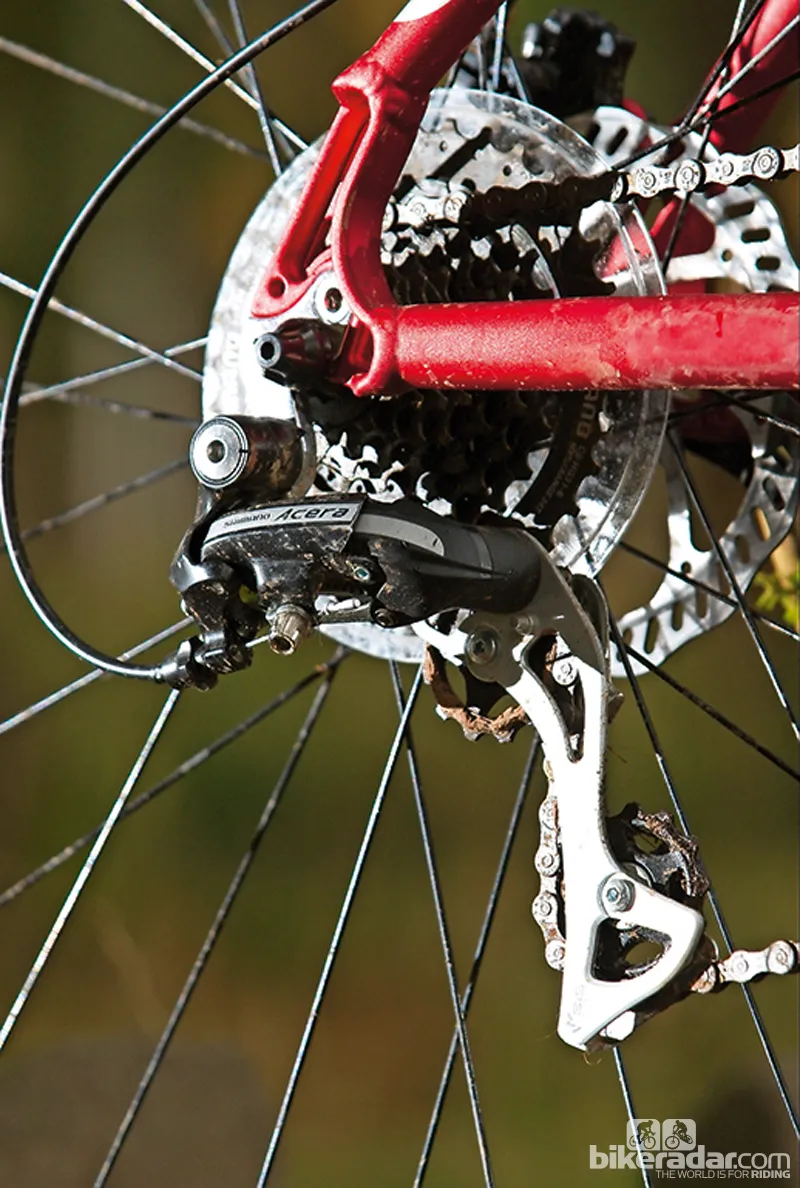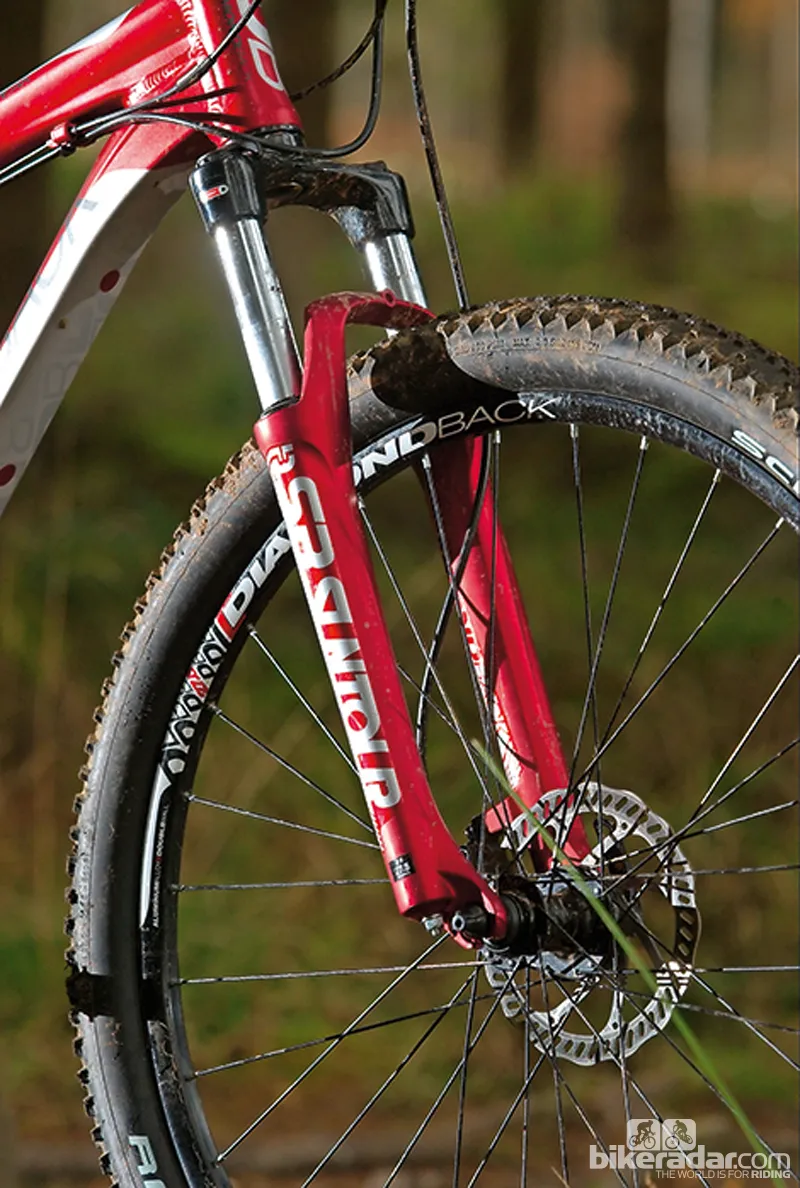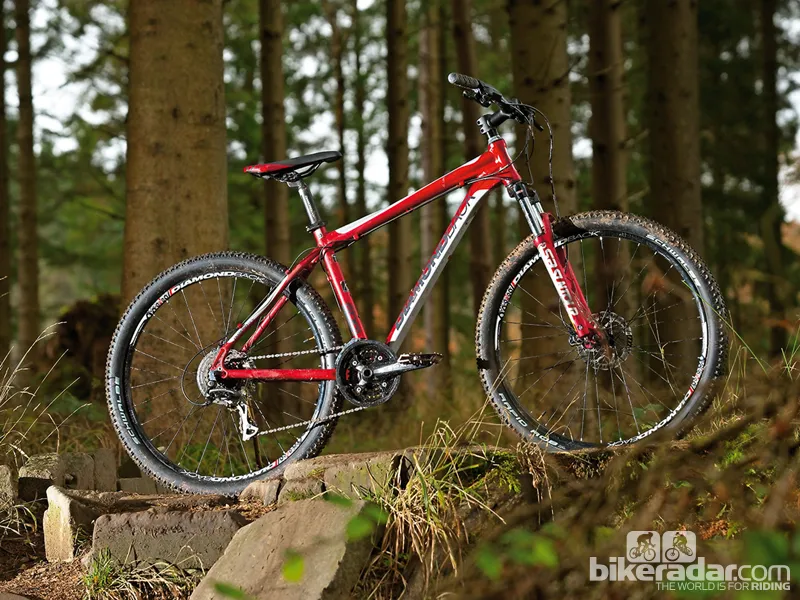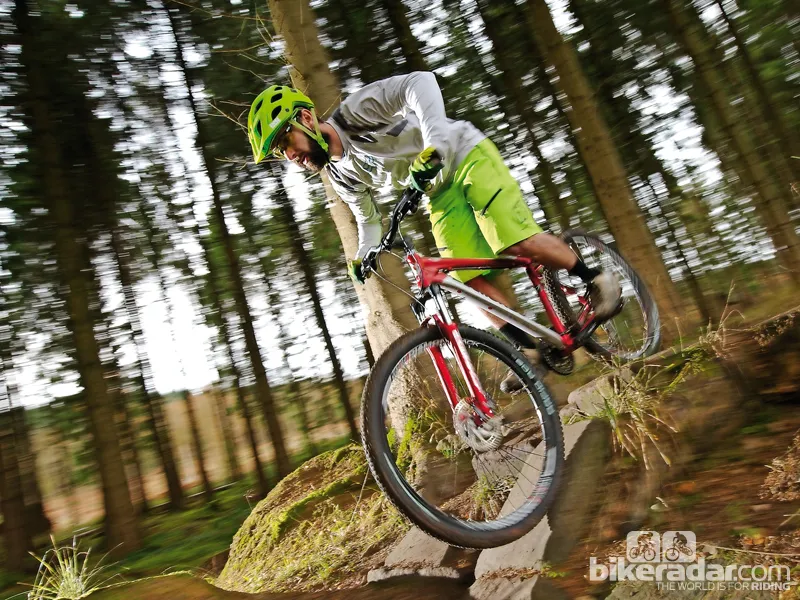Last year's big news – the 'inbetweener' 650b wheel size – is rapidly making inroads. Beginners and buyers on a budget aren't being left out, as Diamondback's sub-£500 Peak shows.
With geometry designed around the mid-sized wheels, is it a good introduction for cash-strapped riders?
Frame and equipment: some obvious spec compromises
There are no two ways about it – the Peak is a good looking bike for the money. The neatly designed frame takes a lot of the credit. Complex-profile top and down tubes add a dose of swoopiness to the looks, as well as providing a stiff backbone to ensure that your efforts at the cranks translate into efficient forward progress. At the rear, slender curved stays prevent the ride from straying into bone-shaking territory by allowing a tiny amount of 'give' over the bumps.
The detail and finish is mostly excellent for the money. We like the neat anti-rub cable sleeves up at the head tube, though the driveside chainstay needs a neoprene protector to prevent chainslap from taking off the smart red finish.
At this price, manufacturers can sometimes find room in the budget for a nine-speed transmission. The Peak sticks with eight-speed – and that's a shame, because we don't like the big gap in ratios between the largest two rear sprockets.

The tight budget shows through in the fork too. Suntour's XCT MLO is a 650b-specific model, so the geometry is spot on for the wheel size. That's the good news. The bad news is that the internals are really basic, with a harsh top-out and no rebound damping. There's a lockout, but we'd take adjustable rebound over that any day.
Ride and handling: a bit on the heavy side, but still lively and stable on the trail
Weighing 14.7kg (32.5lb) before you even add pedals, the Peak isn't a light bike. To Diamondback's credit, that weight doesn't translate into an ungainly feel out on the trail.
Budget 29ers often suffer from overweight wheels that are sluggish to accelerate. While the Peak's 650b hoops are bigger – and heavier – than equivalent 26in wheels, it's noticeably livelier than the wagon-wheeled 29er competition.

Diamondback's designers have nailed the geometry too. The Peak's neutral feel strikes just the right balance between lively and stable, allowing you to concentrate on the trail rather than fighting the bike.
There are two flies in the ointment though. The first is the eight-speed cassette, which has a big jump between the largest two sprockets. It's hard to find the right gear on steeper climbs, leading to a lot of sprocket and chainring swapping in a (usually) vain attempt to find a comfortable pedalling speed. You can work around it, but it's frustrating.
The second issue is the fork. It's reasonable at low speeds, but the faster you go – and the rougher the trail – the more its crude internals kick back. The Peak wants to go faster, but the fork will have you reaching for the brakes early.

